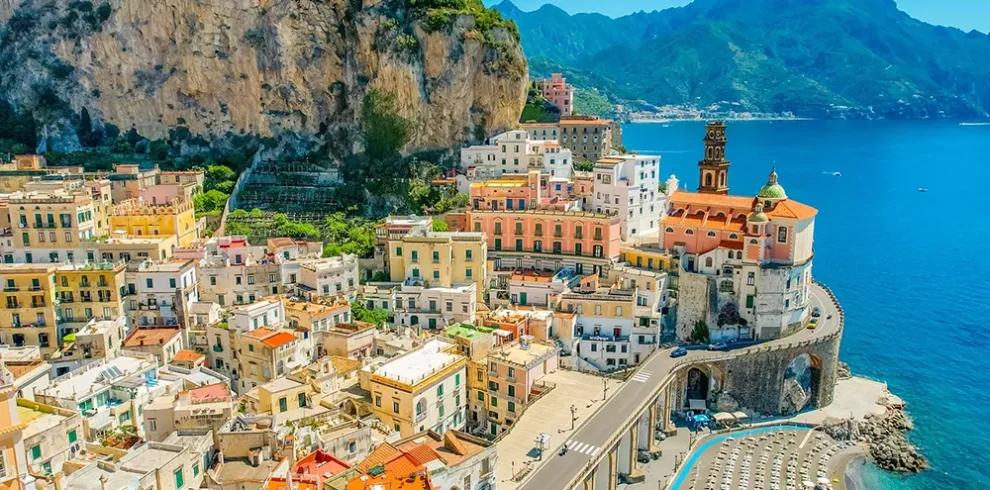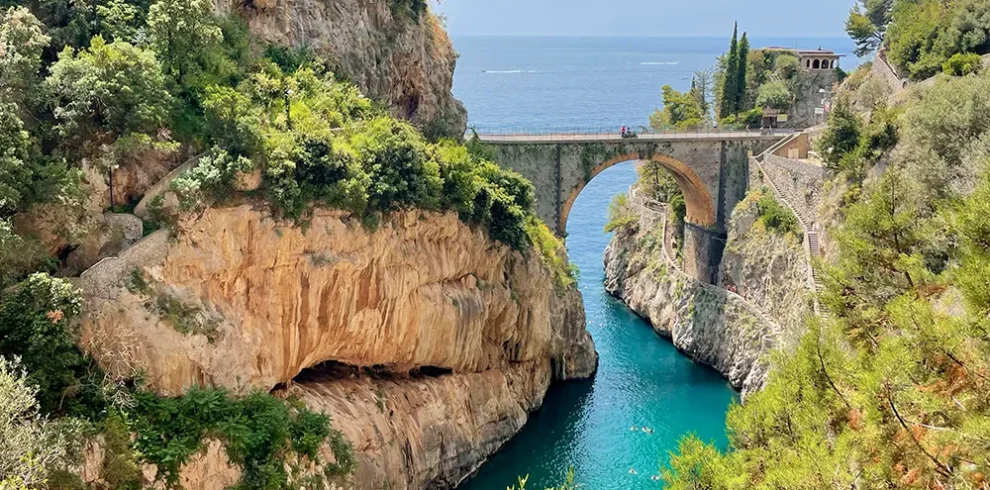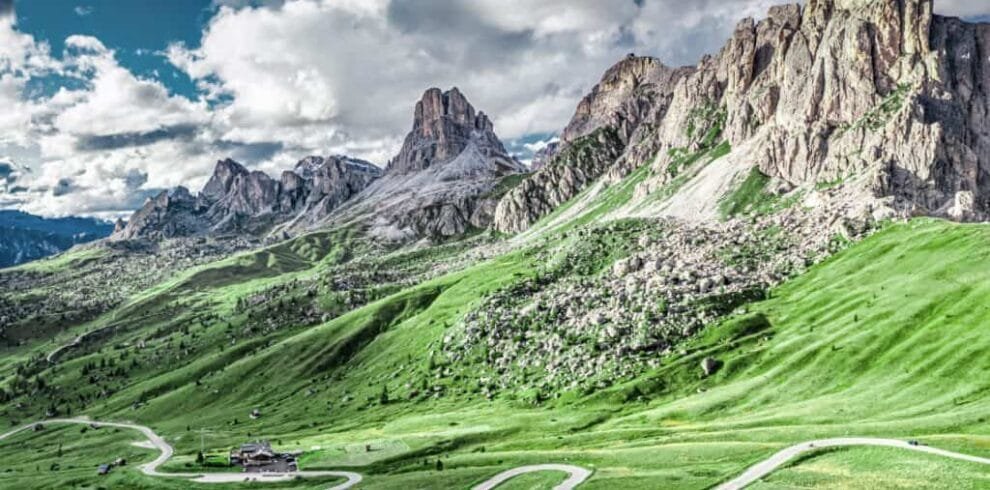The Dolomites are the playground for motorcyclists—jaw-dropping scenery meets twisting, well‑paved roads. This UNESCO World Heritage mountain range boasts “jaw-dropping scenery and equally spectacular roads”. Imagine carving up 48 hairpin bends to 2,758 m while jagged limestone peaks soar overhead. Between sips of espresso and naps at mountain huts, riders from all over the world flock here to earn their bragging rights on these iconic alpine roads. In short: if you want a true European adventure on two wheels in 2025, the Dolomites should top your list.
Top 7 Motorcycle Passes
Here are seven must-ride passes (including a couple hidden gems) for any Dolomites motorcycle tour. Each entry lists elevation, road quality, difficulty, scenery and best time to ride. Get your knee sliders ready!
1. Passo dello Stelvio (Stelvio Pass)
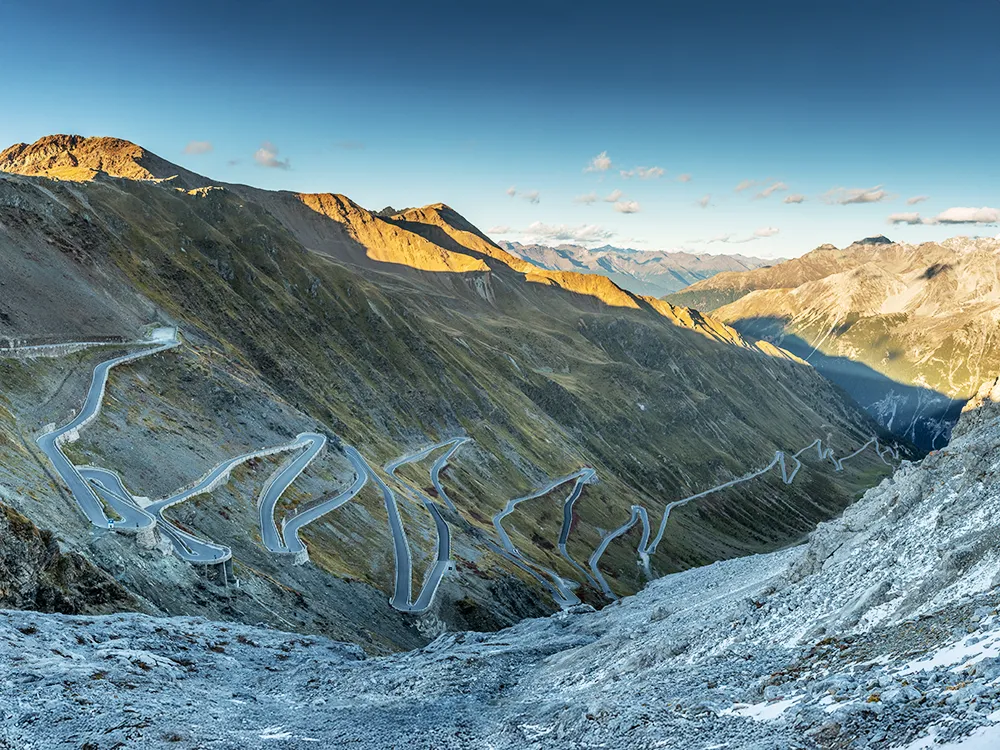
Stelvio is the highest paved pass in the Eastern Alps. It connects Bormio and Prato allo Stelvio via SS38. The road surface is good asphalt, but you won’t be able to roll through fast – there are 48 numbered switchbacks on the northern side (60 hairpins in total if you count all the curves). Difficulty: High. Steep pitches mean you’ll crawl in low gears; many hairpins require crawling at ~30 km/h or less. This is not a beginner road – stay on the throttle through turns and keep weight off the brakes. Scenery: Totally epic. The Stelvio is often called the “Queen of Pass Roads” and its switchbacks create an “incredible wall of turns”. Above the tree line you’re surrounded by glaciers and rock walls – a dramatic alpine landscape that rivals any movie set. Best time: Mid-May/June through October (the pass is closed by snow in winter). If you can, go early in the morning or on a weekday to beat the crowds – this place is legendary and busy in summer.
- Elevation: 2,758 m (9,045 ft).
- Road: Paved SS38 with dozens of hairpins. Excellent surface but narrow and crowded.
- Difficulty: Very steep in places. Tight hairpins (often <30 km/h turns) demand focus. Not for novice riders.
- Scenery: Alpine drama – glaciers, jagged peaks, endless switchbacks. Iconic “bucket-list” views (this road made Top Gear’s front page!).
- Best time: Late May/June–Oct (snow possible outside this window).
2. Passo Pordoi
Pordoi sits between the Sella and Marmolada massifs. It’s the second highest paved pass in the Dolomites (after Sella). Road: A well-maintained asphalt highway connects Arabba and Canazei. Plenty of sweeping corners and a handful of hairpins make for fun riding, and the pavement is “in very good condition” throughout. Difficulty: Moderate. The climb from Arabba gains ~637 m over 9.4 km (avg 6.8%). Not ridiculously steep, but it’s steady. Scenery: Spectacular. From the top you get panoramic views of Marmolada (the only glaciated Dolomite peak) and the Sella group. One cycling guide even says the views “are spectacular, particularly from the Arabba side”. And there’s a Coppi memorial at the summit for Giro fans. Best time: Spring to early fall (May–October), when the weather is dry and snow-free. The pass closes in winter.
- Elevation: 2,239 m (7,346 ft).
- Road: Smooth asphalt, wide curves and hairpins. Generally excellent surface.
- Difficulty: Fairly easy climb. Steady grades (avg ~6.8%).
- Scenery: Alpine theater – rock towers of Sella and Marmolada. Riders rave the views are “spectacular”.
- Best time: May through Oct (avoid early winter snows).
3. Passo di Giau
Giau is a wild, less-tamed sibling of the big passes. The SP638 road is fully paved (built 1986) and stretches 20 km between Selva di Cadore and Cortina. Difficulty: Hard. You’ll climb ~1,000 m over 20 km, with an average gradient around 8%. There are 55 brutal hairpins (the locals count 55!) and ramps up to 13%. In other words, this is a serious test of rider and machine – steep, narrow, and constantly turning. Scenery: Earns its reputation as “one of the most beautiful passes in the Dolomites”. Giau perches on a high plateau; from the top you see 360° views of Dolomite peaks (Monte Nuvolau, Tofana, Pelmo, etc.). It’s so scenic that even Hollywood shot scenes here (Rambo: Last Blood). Best time: Summer only. Technically open year-round, but winter brings heavy snow and even avalanches. Aim for June–Sept on clear days – clouds and mist can roll in fast here.
- Elevation: 2,238 m (7,342 ft).
- Road: SP638, narrow but paved. Hairpin galore (55 turns on the main side). Surface is decent but watch for gravel in places.
- Difficulty: Challenging – steep gradients (up to 13%) and relentless turns. Be ready to drop a gear and hold the throttle.
- Scenery: Epic Dolomite amphitheater. Considered “most beautiful”, with jagged peaks all around. A true alpine vista.
- Best time: Summer (July–Aug), ice/snow possible otherwise.
4. Passo Gardena (Grödnerjoch)
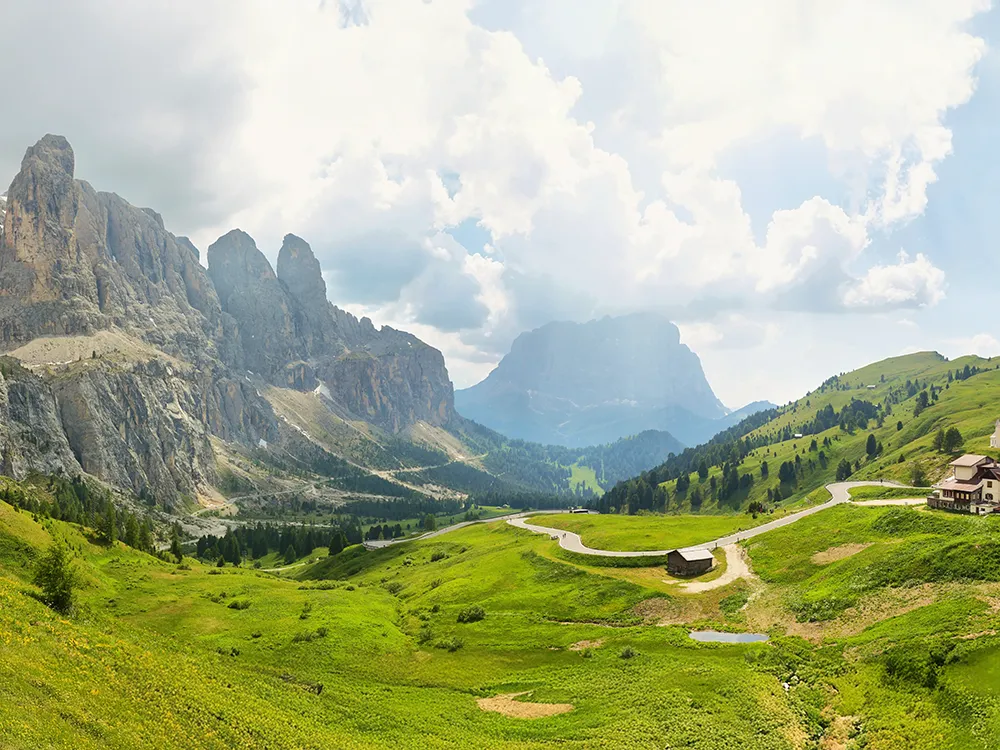
Gardena links Val Gardena (Selva) and Val Badia (Corvara). It’s a key leg of the famous Sella Ronda loop. Road: Paved SS243/242, with about 19 hairpin bends. The tarmac is smooth and the curves flow nicely, but traffic can be heavy (it’s a major summer route). Difficulty: Moderate. Not as steep as Stelvio or Giau – most grades are gentle to medium. Great fun for riders who want lots of curves without too much strain. Scenery: Gorgeous. From the top you can pick out Sassolungo to the west and the Cir Peaks north; turn around and the colossal Sella Group dominates the view. WilderWithYou calls it “one of the Dolomites’ most scenic mountain passes”. Photo ops and rifugio stops abound. Best time: Summer and early fall (June–Sept). In winter it’s part of a ski network, so skip it if icy.
- Elevation: 2,136 m (7,007 ft).
- Road: Smooth asphalt, 19 sharp hairpins. Can be busy with tourists, cyclists and bikers in summer.
- Difficulty: Easy-to-moderate. Steady climb, lots of 180° turns but gentle banking.
- Scenery: Iconic Dolomite panorama – Sassolungo, Cir Peaks, Sella group all visible. Alpine meadows and cliffs on either side.
- Best time: Late spring through early autumn (closed/covered in winter).
5. Passo Sella (Sellajoch)
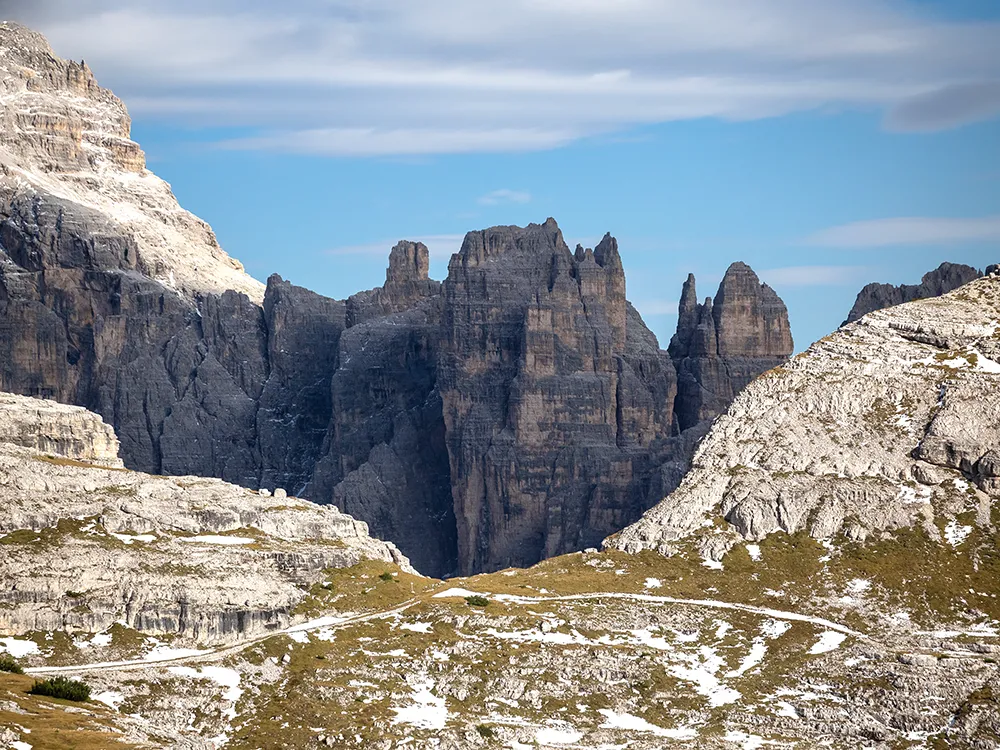
Sella connects Selva in Val Gardena with Canazei in Val di Fassa. It’s another corner of the Sella Ronda (four-pass circuit). Road: Paved and very popular. Riders often reach the summit after 23 hairpin bends from Canazei. The surface is excellent and relatively wide. Difficulty: Moderate climb. Its 6–7% average gradient isn’t extreme, but the ascent is steady. Traffic and cyclists can be dense in midsummer (even Gondolas shuttle cyclists). Scenery: Stunning. You’re surrounded by the Sassolungo (Langkofel) Group and Sella Massif. ABR notes that “the scenery opens up spectacularly towards the top, with fantastic views of the Sella Towers”. It’s a classic Dolomiti vista – don’t miss the overlook there. Best time: Late spring to early fall (May–Oct) July/August sees the Maratona dles Dolomites bike race and extra crowds, so plan accordingly.
- Elevation: ~2,218 m (7,276 ft).
- Road: Good asphalt, 23 hairpins from Canazei. Tends to get busy with cars/bikes in the high season.
- Difficulty: Moderate. Long steady climb, rarely maxes out; average ~6–7%. Riders often enter Top Gear or bike marathons here!
- Scenery: Surrounded by Sella and Sassolungo peaks. Spectacular alpine views everywhere. Many photo pull-offs.
- Best time: May–October (watch for heavy cycling traffic mid-summer).
6. Hidden Gem: Passo di Gavia
Long overshadowed by Stelvio, Gavia is a true alpine marvel. The asphalt SS300 climbs from Bormio or Ponte di Legno to the summit. Road: Though paved (mostly wide enough for one car), sections are narrow and rugged. Expect occasional potholes or gravel near the edges. Difficulty: Very high. The south side from Ponte di Legno is about 17 km at ~8% avg (with pitches up to 16%). Hairpins are insanely tight (a Sportster might need to zigzag). There are barely any guardrails and in places the drop is sheer – a thrilling (or scary) ride. Scenery: Jaw-dropping. You’re above the treeline at all times. High meadows and scree fields give way to the snowfields around the summit. Lago Bianco and Lago Nero sit just below the pass on the descent. On a clear day, the panorama of Ortler Alps and Valfurva is unforgettable. Best time: Short summer season (July–Sept). Gavia often still has snow walls in June. If you ride outside July/Aug, bring thermal layers – it can snow even in summer.
- Elevation: ~2,652 m (8,700 ft) – summit just above 2,700 m.
- Road: Paved SS300, but very narrow. Good surface until sections near the top can be rough and dirt-strewn.
- Difficulty: Hard: long climb (17+ km at ~8%), steep ramps (max ~16%), lots of tight switchbacks with no barriers. Test ride skills & nerves.
- Scenery: High-alpine at its best – glaciers, wild lakes (Lago Bianco/Nero), and the legendary Monumento ai Caduti war shrine at the top. One of Italy’s most dramatic passes.
- Best time: July and August. Beware that snow can linger; outside summer brings chains.
7. Hidden Gem: Passo di Falzarego
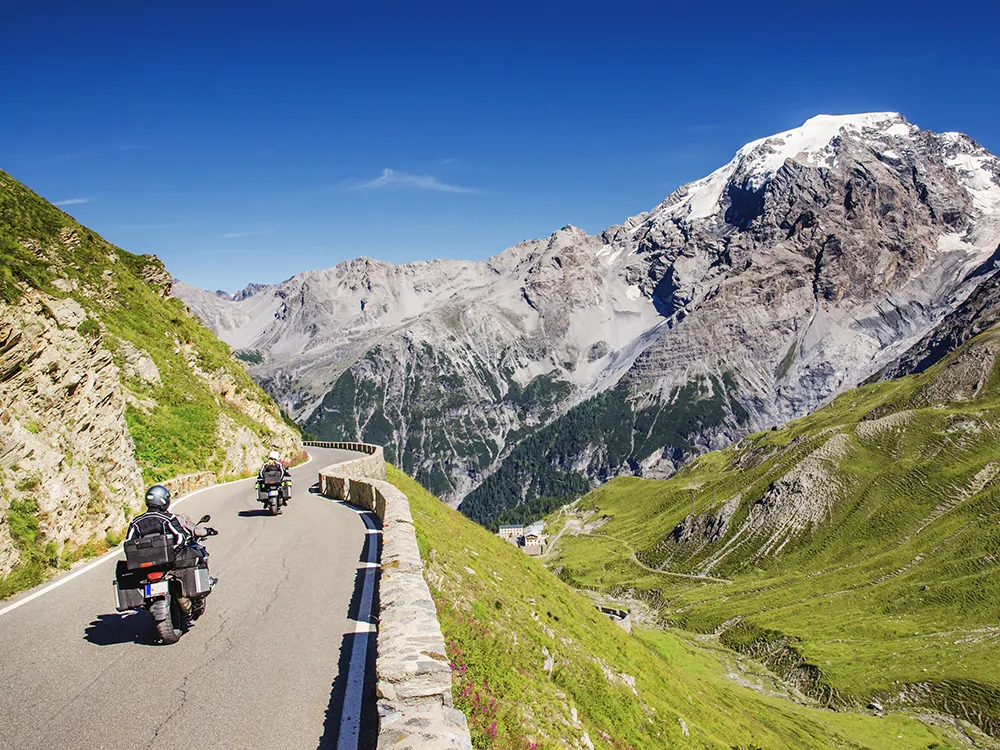
Often reached via the SS48 from Cortina or as part of the Great Dolomite Road, Falzarego is a favorite among locals. Road: Fully paved Strada Regionale 48 (part of the “Great Dolomites Road”). It’s twisty – 38 hairpins and a couple of tunnels – but the turns are relatively wide and the tarmac is great. Difficulty: Moderate. Some ramps reach ~12.6%, but generally the climb is manageable (it’s often tackled on e-bikes and tours). Scenery: Immense. The towering cliffs of Lagazuoi and Sass de Stria dominate the skyline. From the top you can circle around via the SP24 to nearby Passo Valparola. The area is steeped in WWI history (artillery scars on the rock), and the summit has memorials/remains from the “White War”. Best time: Late spring through early autumn. In winter Falzarego becomes a ski zone and the road may close. If you visit in July/Aug, don’t miss riding the nearby Lagazuoi cable car for panoramic breaks.
- Elevation: 2,105 m (6,906 ft).
- Road: Excellent asphalt, 38 tight turns (SR48 Great Dolomites Road). Well-maintained, with scenic tunnels carved through rock.
- Difficulty: Moderate. Steep hairpins exist (max ~12.6%), but mostly a steady climb. Even cruisers find it enjoyable.
- Scenery: Iconic Dolomite peaks all around. Lagazuoi towers to the south, and the whole area is dotted with WWI forts and memorials. Epic views of the Cinque Torri rock spires nearby.
- Best time: Summer (June–Sept) – closed in winter due to snow.
Safety Tips for Mountain Riding
Riding in the Dolomites is awesome – just remember you’re in big mountains. Here are some rider-to-rider tips:
- Switchbacks: Slow in, fast out. Enter a hairpin on the outside edge, look through the turn, and smoothly roll on throttle as you exit. A bit of throttle helps stabilize the bike in a turn. Start braking well before the corner, not mid-turn. And for uphill hairpins, keep enough revs to avoid stalling. As one guide notes, don’t count on having a clear lane – oncoming cars and even (true story!) wandering cows can appear on blind corners.
- Gear Up: Always wear full gear (DOT/ECE helmet, armored jacket/pants, gloves, boots). The weather can shift quickly; pack a waterproof riding jacket/pants and warm layers. In the Dolomites every 1,000 m up you lose ~6.5°C, so even a sunny day at the valley (25°C) can be 10°C up high. The Dolomites travel guide advises bringing rain gear and layering because “mountain weather can be unpredictable, with sudden storms”. Hand and foot warmers (or heated grips/vests) can be lifesavers above 2,000 m.
- Check Conditions: Always check pass status and weather before you set out. Many high passes close from late autumn through spring. Even in summer, afternoon thunderstorms are common – plan your rides for the dry mornings. If a radar shows cell development, hit the big passes early.
- Traffic and Timing: Alpine roads can be narrow, and cars/buses often hog the middle. Be patient. The earlier you go (or mid-week), the fewer camper-vans you’ll meet. Many locals recommend aiming to reach big passes at sunrise or just after – when even TopGear tells you “wake up early to have the road to yourself”.
- Descending: Use engine braking and avoid constant front braking downhill. Bends on descent require the same care – don’t overthink corners (think sight through, not lock brake). Always keep a safe distance from the rider ahead; the guy disappearing around a blind corner might pull an elk out of nowhere.
- Watch For Weather Alerts: High mountain roads can change from dry to slick black ice in minutes. In 2025 some passes may have radar-based avalanche closures (especially Giau/Gavia). Always heed local warnings and signs.
- Stay Hydrated: Altitude can dehydrate you faster. Drink water regularly, even if it’s cool. And savour the local caffè stops – a shot of espresso will keep you sharp around those curves.
Recommended Guided Tours
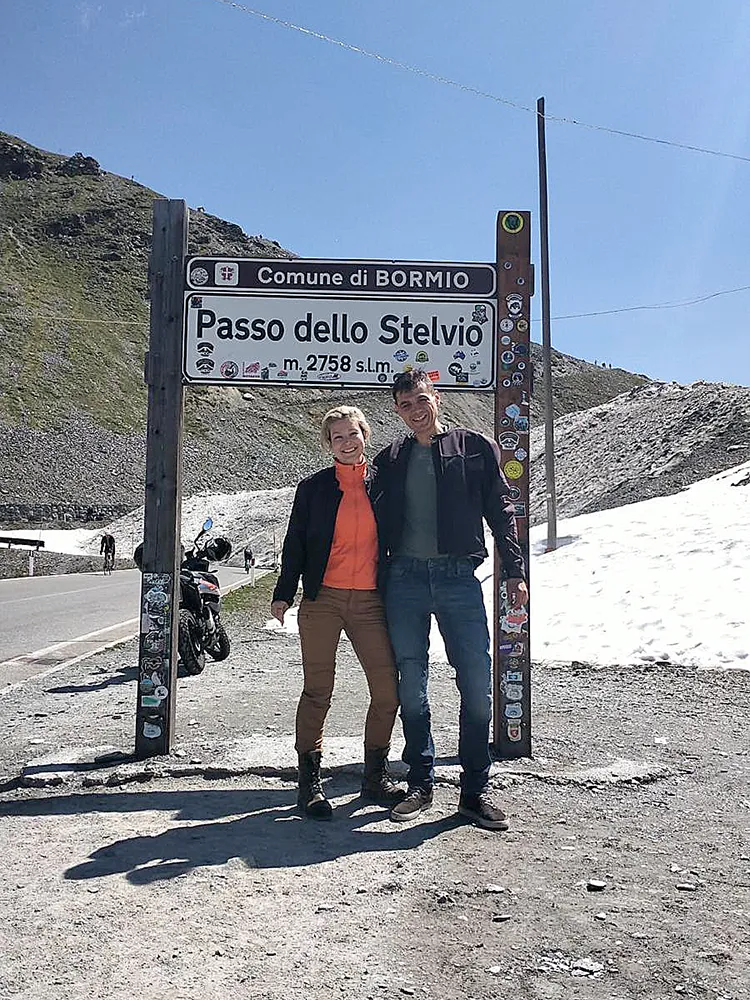

If charting these twisty passes on your own feels daunting, consider a guided tour. For example, Italy Moto Tours offers an 8-day Tour of the Dolomites itinerary that hits Stelvio, Gavia, Sella and more, with local guides handling all the logistics. Or mix peaks with vineyards on a broader trip – check out our popular Tuscany & Central Italy Tour, which swings through rolling Tuscan hills after your mountain thrill. Guided groups often cover multiple passes in a day (no navigation headaches), stop at authentic rifugi for lunch, and have maintenance riders on standby. In short, it’s like having a local motorcycle-savvy friend showing you the best routes (and best gelato).
Other operators (Edelweiss, Rent-a-Bike, etc.) also run Dolomites circuits. But if you are planning on going solo, use this guide, maps, and maybe do one big pass a day until you get your alpine legs. Whatever you choose, make safety a priority and respect the mountains – the Dolomites are more demanding than any freeway.
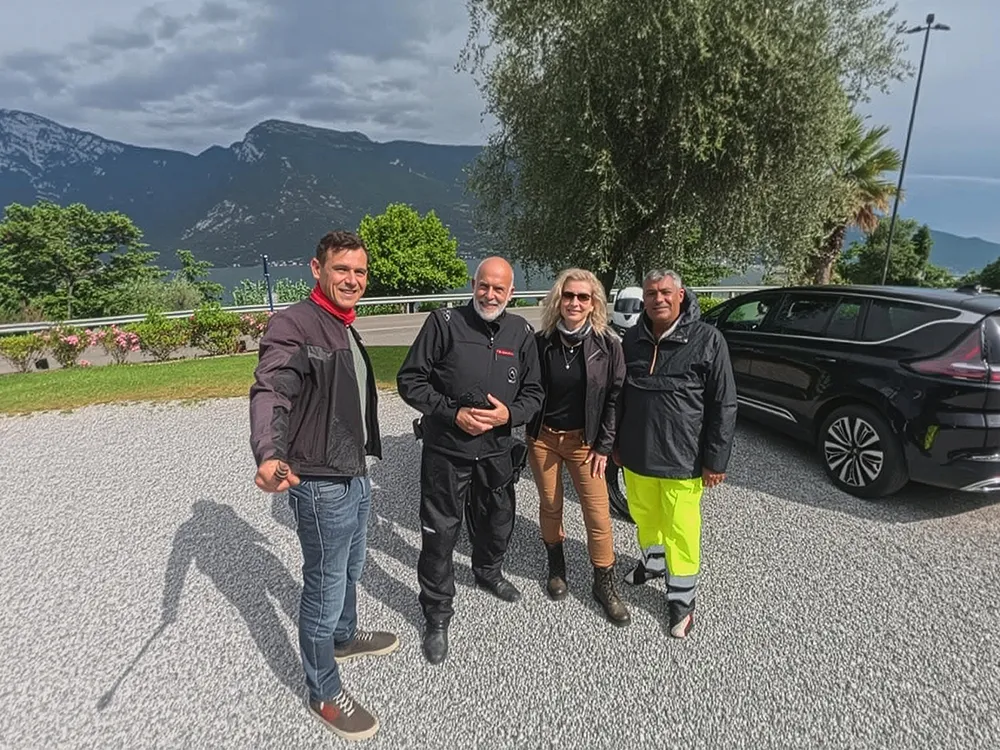
Conclusion
Whether you blast through the Stelvio at dawn or lazily cruise the Falzarego over lunch, the Dolomites deliver an unforgettable ride. From the regal high passes to hidden twisties, every turn has a new view or surprise. It’s motorcycle heaven. So polish those panniers, pack your sense of adventure (and perhaps a spare tube), and book a guided adventure today – Italy Moto Tours and others are already gearing up for 2025. Your ultimate Dolomites motorcycle odyssey awaits; brace yourself for scenery, smiles, and a few shaken but exhilarated knees. Ciao, and ride safe!

